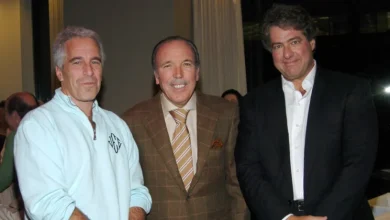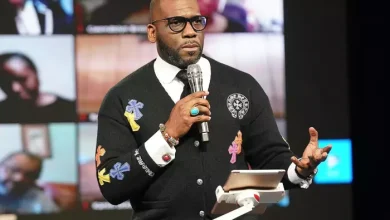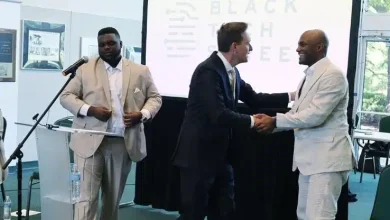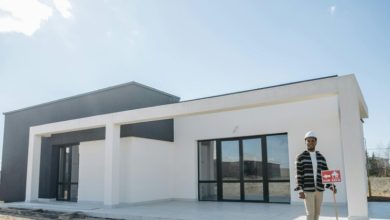15 Things to Know About Rising Cleveland Mayor Justin Bibb

When Justin Bibb took the oath of office at his childhood library in January 2022, the symbolism was unmistakable. Standing where he once escaped poverty through books and early internet access, Cleveland’s new mayor embodied both the city’s struggles and its potential for transformation.
At 34, Bibb became Cleveland’s second-youngest mayor and its 58th leader, winning with 63% of the vote on promises to modernize city services and bridge longstanding racial and economic divides. His rise from Mount Pleasant—one of Cleveland’s most disinvestment neighborhoods—to City Hall represents more than personal achievement; it reflects his governing philosophy that equitable development can lift entire communities.
Bibb’s administration has pursued an ambitious agenda spanning police reform, waterfront development, and violence reduction. His $5 billion Shore-to-Core-to-Shore vision aims to transform Cleveland into one of America’s premier waterfront cities, while targeted investments in neighborhoods like his childhood home demonstrate his commitment to inclusive growth.
The mayor’s approach blends data-driven policy with entrepreneurial innovation, creating nonprofit management entities for city assets and pursuing federal infrastructure funding with unprecedented vigor. His national profile as president of the Democratic Mayors Association and climate action co-chair positions Cleveland prominently in urban policy discussions.
Yet Bibb’s tenure also illustrates the complexities of modern urban governance. He’s navigated tensions between police accountability and public safety, managed school district budget crises, and balanced progressive campaign promises with practical governing realities. His willingness to consider amendments to voter-approved police reforms has drawn criticism from some supporters while earning praise from others who prioritize pragmatic solutions.
Here are 15 key facts about Justin Bibb’s background, achievements, and governing approach as he positions Cleveland for its next chapter.
Personal Background
1. From Mount Pleasant to City Hall: Bibb grew up in Cleveland’s impoverished Mount Pleasant neighborhood, finding refuge in the public library where books and early internet access expanded his worldview beyond his zip code’s limitations.
2. Family Legacy of Service: His late father Donald served as a Cleveland Heights police officer and firefighter for over 30 years, while his mother Charlene spent two decades earning her master’s degree in social work after graduating high school barely able to read or write.
3. Academic Achievement: Bibb earned his bachelor’s in urban studies from American University, studied public policy at the London School of Economics, and completed dual JD/MBA degrees at Case Western Reserve University, positioning himself at “the intersection of business, government, public policy and law.”
Political Rise
4. Historic Electoral Victory: At 34, Bibb became Cleveland’s second-youngest mayor in 2022, winning with 63% of the vote on promises of transformational change and transparent governance.
5. National Democratic Leadership: He currently serves as president of the Democratic Mayors Association and co-chairs America is All In, a climate action coalition, while also serving as national co-chair of Mayors Against Illegal Guns.
Policy Initiatives
6. Southeast Side Promise: This targeted investment program focuses resources on Bibb’s childhood neighborhood, addressing decades of disinvestment in Mount Pleasant and surrounding areas.
7. Housing Investment: His administration created a $100 million housing fund aimed at expanding affordable housing options citywide, addressing Cleveland’s persistent housing challenges.
8. RISE Initiative Success: The violence reduction program achieved a 36% decrease in homicides and record police recruitment numbers, demonstrating measurable progress on public safety.
Economic Development
9. Shore-to-Core-to-Shore Vision: Bibb’s signature $5 billion development plan connects Lake Erie to the Cuyahoga River, including over $150 million for lakefront improvements and collaboration with private developers.
10. Browns Stadium Negotiations: He’s working to keep the NFL team on Cleveland’s lakefront through stadium renovations while pledging to protect general revenue funds from the project costs.
11. Waterfront Transformation: His administration is pursuing major partnerships, including Dan Gilbert’s Bedrock development on the Cuyahoga River, to create connected waterfront districts.
Governing Challenges
12. Police Reform Balancing Act: While supporting Issue 24’s civilian oversight powers, Bibb has acknowledged the need for potential amendments to balance accountability with officer recruitment amid persistent violence and staffing shortages.
13. School District Crisis: He faces a looming budget deficit at Cleveland Metropolitan School District, testing his leadership of the board he appoints and his ability to navigate difficult financial decisions.
14. Political Tensions: Bibb has managed criticism over his initial response to Gaza war protests and occasional friction with City Council President Blaine Griffin, reflecting the complexities of urban governance.
Leadership Philosophy
15. Entrepreneurial Governance: Bibb emphasizes bringing “an entrepreneurial mindset” to city management, creating nonprofit entities to manage assets like the West Side Market and Highland Park Golf Course while pursuing innovative financing for major projects.
Looking Forward
Bibb’s approach centers on equity-driven decision-making and modernizing city services through technology and private-sector partnerships. His willingness to take calculated risks—from pursuing federal infrastructure funding to reimagining Cleveland’s waterfront—reflects his belief that the city must “think big” to compete nationally.
As he approaches his term’s midpoint with an eye toward 2025 reelection, Bibb faces the fundamental challenge of translating ambitious vision into measurable improvements in residents’ daily lives. His early record shows both significant achievements and the inevitable complexities of governing a Rust Belt city seeking 21st-century reinvention.
The mayor’s emphasis on his Mount Pleasant roots while pursuing billion-dollar development projects illustrates his attempt to bridge Cleveland’s persistent inequities with transformative economic opportunities. Whether this balance proves sustainable will likely determine both his political future and Cleveland’s trajectory as a modern American city.




